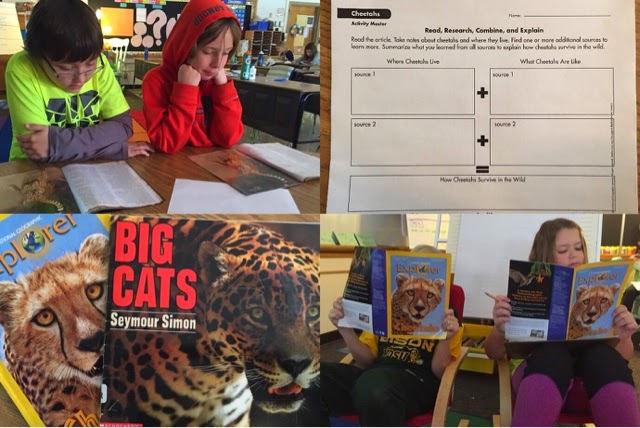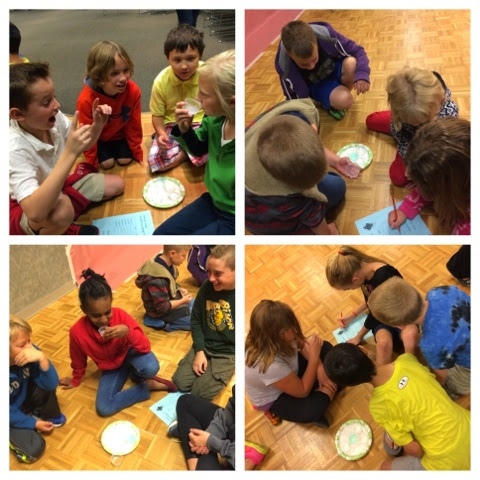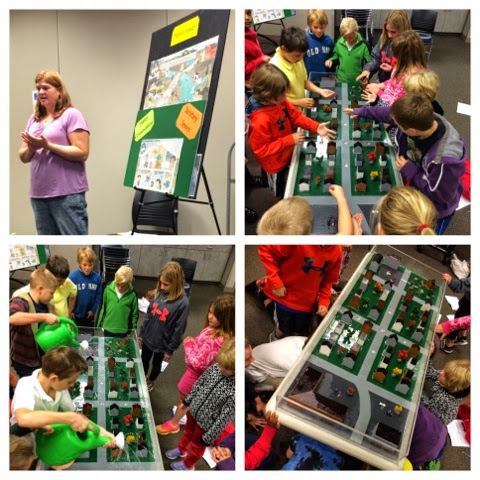Our spelling work this year will be "a little of this, and a little of that." What do I mean? Well, the district's primary resource is Sitton Spelling. I LOVE the weekly lesson materials in the program. They are engaging and effective, and I love teaching them as much as the students' love completing the activities. And even though I've sung Rebecca Sitton's praises since my stint teaching in Wisconsin (my district sent me to training WITH Rebecca Sitton), in the last few years I've come to the conclusion that the assessment portion of the program is no longer meeting the needs of our students as it focuses exclusively on high frequency words (words used most often, and these words show up multiple times on assessments), which we can still work on during Writing Workshop. So...you can continue to expect to see our weekly Take-Home Task from this program, but not the weekly Word Test (a paragraph format with missing words throughout).
So what was missing and what are you replacing it with?
Well, what's missing is morphology and studying Greek and Latin roots. Yes, I know, you probably have no idea what that means, and you might be thinking Mrs. Clarey is starting to travel to the land of language that only teachers understand. WAIT! Let me explain.
Morphographs are basically parts of words that hold meaning. Many of us might thinking of them as
roots (aka: root words, base words, etc) or
affixes (prefixes and suffixes).
Why is this so important?
Well, when we understand what these roots and affixes mean and how to spell them, not only do we become
better spellers, but we also
improve our reading fluency (we already know many chunks of more complex words and have to spend less time decoding unfamiliar words)
and our reading comprehension (when we understand parts of more complex vocabulary we can more easily determine meaning...this will be CRITICAL as students progress into middle and high school). Here's an example from the first time I used morphographs with third graders:
"Mrs. Clarey! I can connect -ly to three different things we are studying right now! We are learning how to spell words with -ly in spelling, we are studying adverbs which often end in -ly, and in math we are doing fractions and equalLY dividing wholes. This is so cool!" As you can see, students are able to start recognizing these roots and affixes throughout our day, and as they become more and more familiar with them can apply not only the rules for spelling but also identify and apply their meanings.
What can we expect for words, studying at home, and tests?
I will be selecting
weekly lists of words based on different roots and affixes, but also taking into consideration what types of words complement what we are studying across subject areas. Last week and this week's lists both focus on -able and act.
At home, you can practice using any method that is convenient for your family. Verbally spelling (great for quick car rides between activities), writing, using Scrabble tiles, etc. I'm sure Pinterest is full of more great ideas. :) In addition, students can access our
www.spellingcity.com page from home and play games or take additional practice tests. Each student's username and password is in the front cover of their planner!
Tests - currently we are taking our pretests and Friday tests on the Spelling City website. This is the first year that I've purchased a Premium Class account and had the option to test this way. I was very open with the students the first week and let them know that we will try taking our quizzes on the computer for a few weeks, then make a decision on whether or not we like this format. In fourth grade we do have direct keyboarding instruction, but we might decide we are not quite comfortable typing our words for quizzes, and that's ok! The premium account also gives us access to additional games as well as activities for vocabulary, so I think we'll find it was worth the investment.
I hope this explains "the what" and "the why" for you. Please feel free to contact me with any questions!




















































